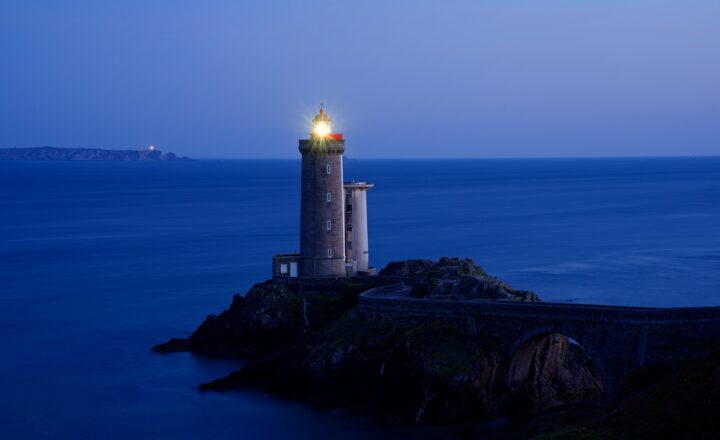The Stories Behind the Most Famous Lighthouses and How They Guided Ships to Safety for Centuries
November 17, 2024

Lighthouses have long stood as beacons of hope and safety for mariners navigating treacherous coastal waters. Their tall, striking structures, often perched on cliffs or isolated islands, tell a story of resilience and innovation that dates back centuries. The gentle beam of light emitted from a lighthouse not only directs sailors away from danger, but also serves as a reminder of the hidden challenges that lie beneath the waves. In this article, we will delve into the intriguing stories behind some of the most famous lighthouses in the world, exploring their significance in maritime history and the lives they’ve saved.
1. The Importance of Lighthouses in Maritime Navigation
Lighthouses play a crucial role in maritime navigation, guiding ships safely to shore and preventing tragic accidents from occurring. Here are some of the fundamental aspects of their importance:
- Navigational Aids: Lighthouses mark dangerous coastlines, hazardous shoals, reefs, rocks, and safe entry points to harbors. The lights can vary in color, intensity, and rhythm to convey different meanings to sailors, helping them to identify their location and navigate safely.
- Symbol of Safety: For many sailors, sighting a lighthouse could signify safety and proximity to land after a long journey across the sea. The presence of a lighthouse provided much-needed reassurance during stormy weather or fogbound nights.
- Cultural Icons: Beyond their functional role, lighthouses have become symbols of unique geographical locales, tourism hotspots, and even artistic inspiration. They represent human ingenuity and perseverance against the elements, capturing the imaginations of people worldwide.
2. The Eddystone Lighthouse: Living in Harmony with the Sea
Located off the coast of Devon, England, the Eddystone Lighthouse stands as one of the most iconic lighthouses in the world. Designed by Sir James Douglass, its construction began in 1882, replacing the original lighthouse built in 1698. The site is notorious for its rough seas and has been a resting place for many shipwrecks over the years.
The Eddystone Lighthouse holds a remarkable record — it was the first lighthouse ever constructed to withstand the English Channel’s notorious storms. Its round shape and granite base, paired with an innovative design, enabled it to stand firm against the relentless force of the ocean.
Over the years, the lighthouse has undergone several upgrades and renovations, yet it maintains a constant beam that can shine for over 20 nautical miles. The Eddystone serves as more than just a beacon — it embodies centuries of maritime history and showcases humanity’s drive to conquer nature.
3. The Statue of Liberty: A Lighthouse Reimagined
Often overlooked as a lighthouse, the Statue of Liberty served as a welcoming light for immigrants arriving in America. Designed by French sculptor Frédéric Auguste Bartholdi and completed in 1886, she stands on Liberty Island in New York Harbor, holding a torch that symbolizes freedom and enlightenment.
Though it wasn’t originally built to function as a lighthouse per se, Lady Liberty was designed with a beacon at her base that emitted light to guide ships entering New York Harbor. Her iconic status as a welcoming figure has since overshadowed her role as a navigational aid. Yet, the spirit of this magnificent monument inherently embodies the guiding principle that lighthouses represent: hope and safety as mariners make their way home.
4. The Cape Hatteras Lighthouse: A Monument to Survival
Known as the tallest brick lighthouse in the United States, the Cape Hatteras Lighthouse is located on the Outer Banks of North Carolina. First constructed in 1803, it struggled to protect sailors from the infamous “Graveyard of the Atlantic,” a stretch of coastline notorious for shipwrecks.
Initially painted with a plain white exterior, the lighthouse underwent a significant redesign in 1870 with its distinctive black and white spiral pattern. This design was not only aesthetically pleasing but also significantly improved its visibility against the horizon.
In the early 1990s, the lighthouse faced rising sea levels threatening its structural integrity. In a monumental decision, the lighthouse was relocated 2,900 feet inland, ensuring its continued presence as a crucial navigational aid for ships traversing the Atlantic.
5. Pigeon Point Lighthouse: A Californian Gem
Perched along the central coast of California, the Pigeon Point Lighthouse was completed in 1872 and stands 115 feet tall, making it one of the tallest lighthouses in the United States. Situated on a dramatic cliff overlooking the Pacific Ocean, its unique hexagonal shape is complemented by a vibrant white exterior and a red-tiled roof.
The lighthouse has been an important navigational point for sailors, particularly during the Gold Rush era, when thousands of ships navigated California’s rugged coastline. Today, Pigeon Point Lighthouse is equipped with a modern light that operates automatically, preserving its legacy while ensuring the safety of contemporary mariners.
Visitors can explore the lighthouse grounds and enjoy the stunning views of the surrounding coastline, a constant reminder of its rich maritime history.
6. The Great Point Lighthouse: A Testament to Resilience
Sequestered on Nantucket Island, Massachusetts, the Great Point Lighthouse serves as a reminder of the region’s illustrious whaling history. Originally built in 1784, it has undergone numerous renovations and reconstructions over the years due to harsh weather conditions.
The lighthouse is unique in that it retains its original lantern room, representing an essential glimpse into maritime construction and design from centuries past. The Great Point Lighthouse now operates on solar power, aligning its functionalities with contemporary environmental standards.
With its picturesque coastal setting and historical significance, the Great Point Lighthouse remains a prominent landmark that captures the spirit of resilience, innovation, and community effort.
Conclusion: The Enduring Legacy of Lighthouses
The stories rooted in these magnificent structures exemplify humanity’s unyielding desire to navigate through life’s challenges — whether on land or at sea. From monumental engineering feats to symbols of hope and safety, lighthouses have played a pivotal role in guiding sailors to safety for centuries, instilling a sense of adventure and yearning for exploration.
As we continue to evolve technologically and redefine the parameters of navigation, the legacy of lighthouses and the stories behind them will remain forever entrenched in maritime history. They serve as a gentle reminder of our connection to the sea, our journeys, and the enduring spirit of survival.
In celebrating these iconic symbols, we honor the countless lives they have touched, allowing us to navigate our own journeys with renewed clarity and purpose.






